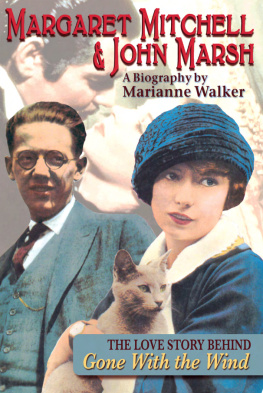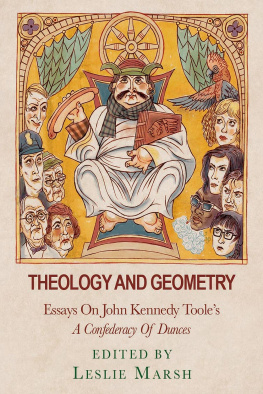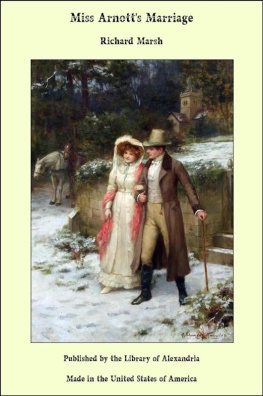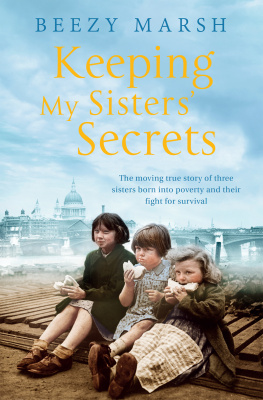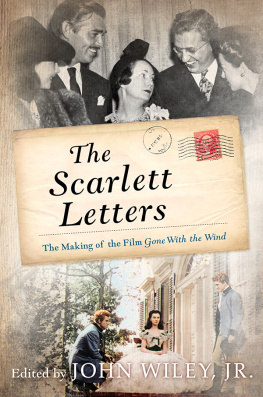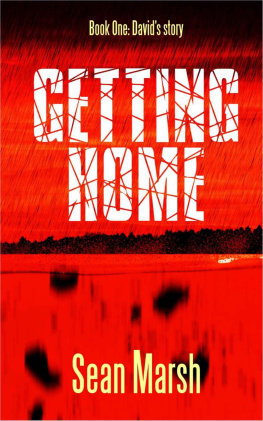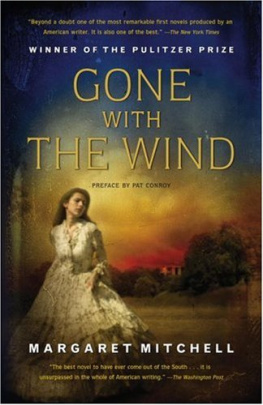MARGARET MITCHELL
& JOHN MARSH
THE LOVE STORY BEHIND
Gone With the Wind
A Biography by
Marianne Walker
This new paperback edition
coincides with the
75th Anniversary
of the publication of
Gone With the Wind


Published by
PEACHTREE PUBLISHERS
1700 Chattahoochee Avenue
Atlanta, Georgia 30318-2112
www.peachtree-online.com
Copyright 1993, 2000, 2011 Marianne Walker
All rights reserved. No part of this book may be reproduced in any form or by any means without the prior written permission of the Publisher, excepting brief quotations used in connection with reviews, written specifically for inclusion in a magazine or newspaper.
Letters from Harold Latham and Lois Cole to Margaret Mitchell and John R. Marsh are reprinted with the permission of Macmillan Publishing Company.
Jacket photographs of Margaret Mitchell used with permission from Hargrett Rare Book and Manuscript Library, University of Georgia (back) and the Atlanta-Fulton County Public Library (front). Jacket photographs of John R. Marsh from the files of Mary Singleton (back) and from the private collection of Mary Marsh Davis (front). Clark Gable and Vivien Leigh photo CRIA Images LLC, Jay Robert Nash Collection.
First hardcover edition, 1993
Jacket design by Loraine M. Joyner
Book design by Candace J. Magee
Composition by Ann Walker Pruitt
Production coordination by Melanie McMahon Ives
Library of Congress Cataloging-in-Publication Data
Walker, Marianne, 1933
Margaret Mitchell & John Marsh : the love story behind Gone with the wind / Marianne Walker.
p. cm.
Includes bibliographical reference.
ISBN: 978-1-56145-650-5 / 1-56145-650-0 eBook
1. Mitchell, Margaret, 1900-1949Marriage. 2. Mitchell, Margaret, 1900-1949Correspondence. 3. Marsh, John R. (John Robert), 1895-1952Marriage. 4. Marsh, John R. (John Robert), 1895-1952Correspondence. 5. Women novelists, American20th centuryCorrespondence. 6. Women novelists, American20th centuryBiography. 7. AuthorshipCollaborationHistory20th century. 8. Love-letters. I. Title. II. Title: Margaret Mitchell and John Marsh.
PS3525.I972Z94 1993
813' .52dc20
[B] 93-26481
CIP
For the man in my life,
Ulvester Walker
And in loving memory of my parents,
Joseph D. and Rose Spatafora Cascio
Contents
CHAPTER 1
A Man Of Character
CHAPTER 2
1895-1919 / Opposites Attract
CHAPTER 3
1912-1921 / Reasonable Ambitions
CHAPTER 4
1922-1924 / A Bizarre Courtship
CHAPTER 5
1922-1925 / Love Regained
CHAPTER 6
1925-1926 / A Writer In Progress
CHAPTER 7
1927-1935 / In the Wake of a Masterpiece
CHAPTER 8
1935-1936 / Midwife to a Novel
CHAPTER 9
1936 / A Fantastic Dream
CHAPTER 10
July 1936 / Unbelievable Days
CHAPTER 11
1936-1937 / Reaping the Whirlwind
CHAPTER 12
1937-1939 / Publicity, Pirates, and Power
CHAPTER 13
1936-1939 / Making the Movie
CHAPTER 14
1940-1945 / Patriotic Volunteer
CHAPTER 15
1945-1952 / Reality of Dark Dreams
This edition of MARGARET MITCHELL & JOHN MARSH: THE LOVE STORY BEHIND GONE WITH THE WIND commemorates the seventy-fifth anniversary of the publication of GONE WITH THE WIND.
In the spring of 1935, when Margaret Mitchell hesitantly turned her manuscript over to Harold Latham of The Macmillan Company, little did she think that her book would be one of the worlds best-known and best-loved novels. She would have found it hard to believe that more than seven decades after its initial release, Gone With the Wind has been published in nearly forty languages, in countless editions, and it is still capturing the hearts of readers. It also spawned two sequels which she, no doubt, would not have approved but which were necessary to extend copyright protection on Gone With the Wind.
As explained in this biography, most of the original manuscript of Gone With the Wind was burned by John Marsh following his wife's death in accordance with her wishes. However, the final typescript of the last four chapters was discovered among the papers of George Brett Jr., the president of Macmillan, Mitchell's publisher. A longtime supporter of the Pequot Public Library, in Southport, Connecticut, Brett gave these chapters to the library in the early 1950s and they were twice displayedin 1979 and 1991. But no one there realized the value of the manuscript, which was returned to storage, until Ellen Brown, who was working on her book with coauthor John Wiley, Jr., asked about Brett's collection, leading the library to rediscover these valuable pages.
Although the popularity of the 1936 Pulitzer Prizewinning novel remains strong, some people seem to have forgotten the critical acclaim it received in the years immediately following its publication. On this anniversary of the publication, the author of Gone With the Wind deserves to be recognized once again for writing what James Michener describes best as the spiritual history of a region.
Mitchell grew up surrounded by old people who remembered well Shermans march to the sea and the events that followed. An observant child with an eye for detail and a remarkable memory, she listened to their stories, their eyewitness accounts, and as she matured she learned to listen to the silent voices emanating from the old diaries, letters, photographs, daguerreotypes, battlegrounds, and cemeteries of north Georgia. From her listening, her observations, and her research, she produced not only unforgettable characters, but also a reliable, detailed description of day-to-day life in the South of the Civil War era.
Many of her detractors unfairly equate her values with the values of the societies about which she wrote, but Mitchell was no uncritical defender of the Old South. Beneath the surface of her book the careful reader can find a rich vein of social criticism. Mitchell depicted many of the major characters who support the Lost Cause as obtuse and fatuous. She created Rhett Butler and Scarlett OHara as realists who reject the old views and negate the conventions of the old society while keeping what was best about it. What Rhett loves about the Old South is what most people love. Both carve out new patterns of life for themselves while choosing to remain in the South. Historian Henry Steele Commager once pointed out that the characters of the book represent, in many ways, the New South versus the Old, and it is not clear that one is better than the other. He added, It is one of the virtues of Miss Mitchells book that she presents the myth [of the Old South] without being taken in by it or asking us to accept it, and that she makes clear the reasons for both its vitality and its ultimate demise.
The point demands emphasis because Mitchells critics have often accused her of perpetuating attitudes of racism. Since the first edition of this book, additional evidence has emerged to support the contention that Mitchell found ways to transcend the values that still ruled the South in the 1930s and 40s. Her humane attitudes found expression in letters that she and her husband exchanged with Benjamin E. Mays, president of Morehouse College. Published in 1996, the correspondence reveals that she provided anonymous financial assistance during the 1940s for more than twenty black students seeking pre-medical and pre-dental degrees. Her concern about the inadequacies of medical care for African-Americans also moved her to contribute generously toward the building of a new wing at Grady Hospital in Atlanta. Although she lived in a society that languished under a regimen of strict racial segregation, she did try to lessen the impact of the harshest features of that social order.
Next page
